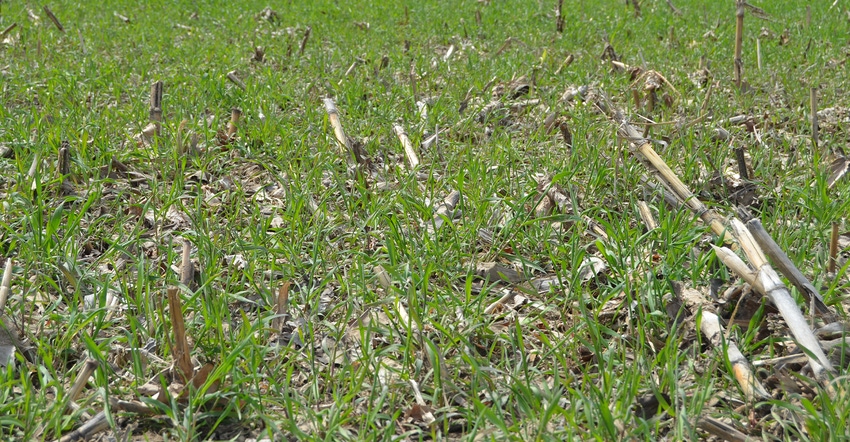June 26, 2019

Prolonged rain and floodwaters kept you out of fields this spring. Instead of looking at bare ground, you want to plant cover crops. Before heading to the field, make sure to know your when and why.
University of Missouri Extension agronomist Rob Myers says the choice of cover crop depends on timing and purpose. "If you want to protect the soil, suppress weeds and feed the soil biology, a mix of cover crop species is helpful," he says.
Plant for cover
Generally, mixing one or more grass cover crop species with a legume or other broadleaf cover crops provides the best weed control and overall soil health.
Choose warm-season cover crops such as sorghum-sudangrass, pearl millet, cowpeas, sun hemp, sunflower and buckwheat if planting in June or July. After that, switch to cool-season cover crops such as radishes, cereal rye, oats, crimson clover or Austrian winter peas.
Sow for forage
If you plant for forage, use a mix of covers. The exact mix depends on whether it is for grazing or haying.
"Again, keep the [Risk Management Agency] rules in mind if the cover crop is to be used for forage, and also pay attention to herbicide labels for the relevant waiting period before forage use," Myers says.
Cover crops also can "reboot" the soil biology in fields that were flooded for long periods.
"If fields are left fallow after a prolonged flooding event, growth of corn or other crops can be somewhat reduced the next spring due to damaged soil biology from flooding," Myers says. "Cover crop roots feed many different types of beneficial soil organisms such as mycorrhizal fungi, starting the process of rebuilding soil health after flooding and before planting the next cash crop."
Help with choices
Here is a list of resources that can help with prevented plant and cover crop decisions:
Source: The University of Missouri Extension, which is solely responsible for the information provided and is wholly owned by the source. Informa Business Media and all its subsidiaries are not responsible for any of the content contained in this information asset.
You May Also Like




